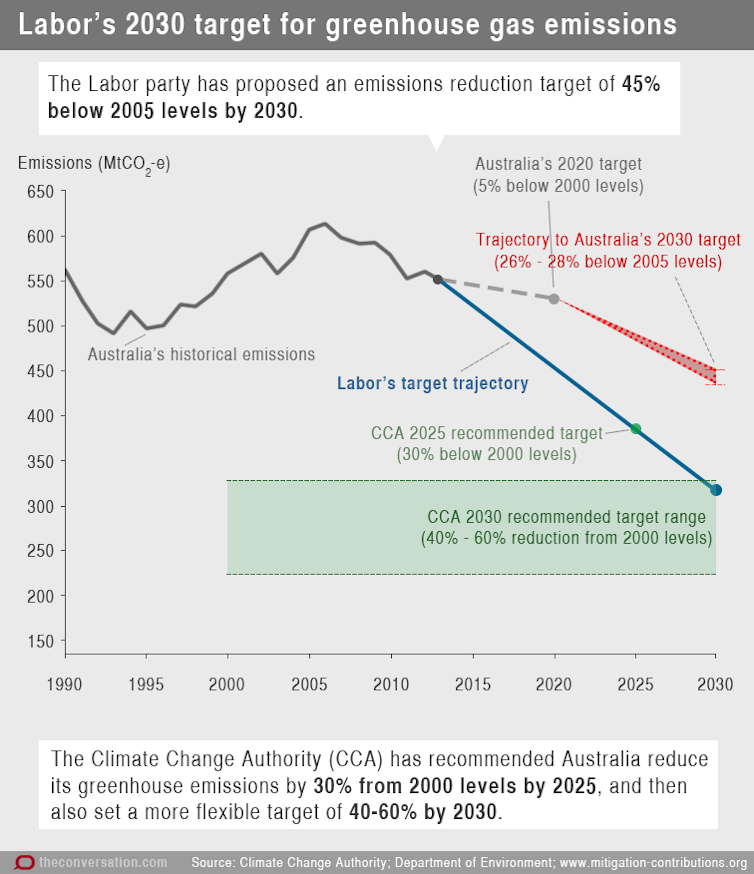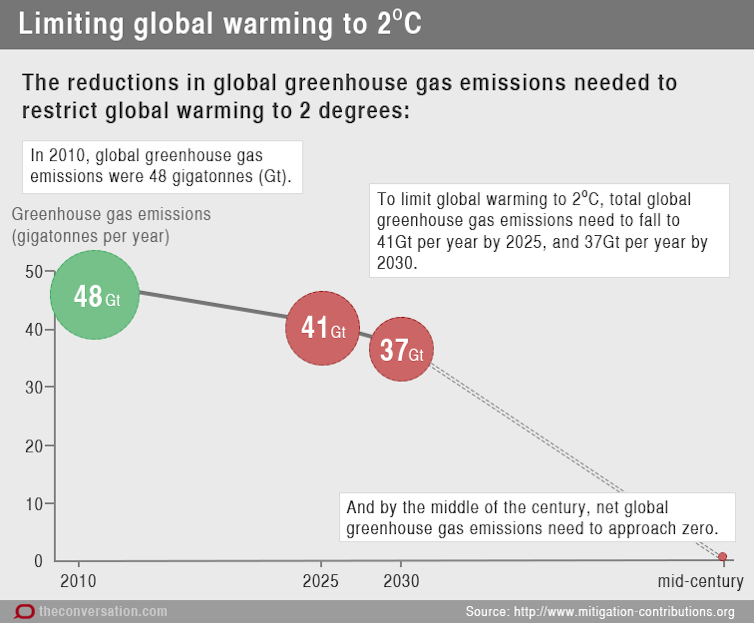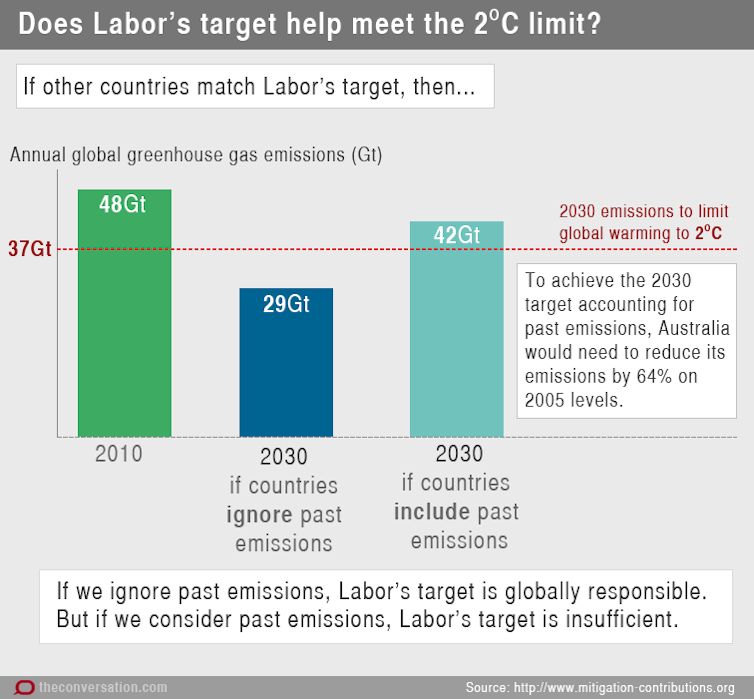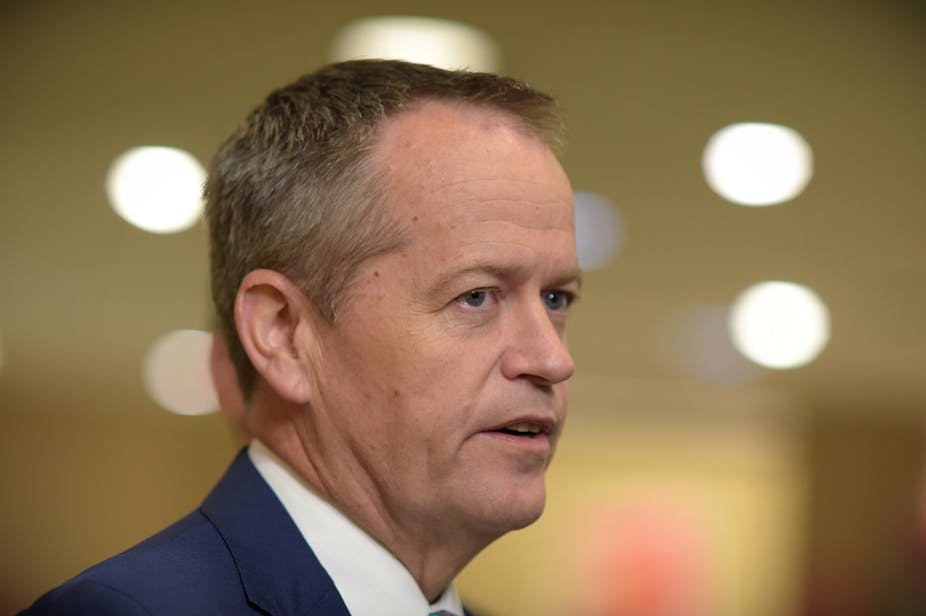Opposition leader Bill Shorten has proposed an emissions reduction target of 45% below 2005 levels by 2030, based on recommendations from the government’s climate change policy advisory body, the Climate Change Authority. Shorten has also pledged zero net emissions by 2050, and ongoing reviews of the target.
In its review, the Climate Change Authority recommended that Australia adopt a target of between 40% and 60% by 2030 on 2000 levels.
Converting this to the 2005 baseline gives a target of around -44% to -63% on 2005 levels. So Labor’s target would match the very weakest within the Climate Change Authority’s range.
We plugged this target into our mitigation-contributions.org interactive webtool. The website allows the effectiveness of climate pledges from G20 countries to be assessed using different assumptions of what is a “fair” distribution of emissions reduction efforts.
What we found was that, first, Labor’s proposed 2030 target meets the Climate Change Authority’s recommended 2025 target of -30% below 2000 levels, as you can see in the chart below.

Second, Labor’s target may or may not be sufficient to keep the world within 2C, depending on what you consider a fair distribution of emissions between nations. Let’s unpack that a little more.

Most people agree that globally we should be striving for equal emissions per person. However, there are two broad views on how to get there:
Either we acknowledge historic emissions and “punish” those countries that have used a disproportionate amount in the past
Or we ignore past emissions and all countries strive for equal-per-capita emissions from now until some point in the future.
Under the latter option, Labor’s proposed target is sufficient to give the world a 67% chance of staying within 2C (see image below). This assumes that Australia adopts Labor’s target and all other countries match the effort of the target by using the same formula for calculating equal per-capita emissions.
However, if historic emissions are included we assume that because Australia has one of the highest per-capita emissions in the world it has a responsibility to reduce its emissions more rapidly and severely. Using this approach, Labor’s target does not do enough (see image below).

Here, again, we are assuming that Australia adopts Labor’s target and all other countries follow suit in a way that takes into account historic emissions and aims for equal, cumulative per-capita emissions. There is of course no guarantee that this will happen.
Essentially, Labor’s proposal improves on Australia’s current target of 26% to 28% below 2005 levels by 2030 and this is one step in the right direction. However, to be considered a good global citizen by factoring in past emissions as well as future emissions, Australia would need to commit to the tighter end of the Climate Change Authority’s target and do even more.
In fact, a target of -64% on 2005 levels by 2030 is what would be needed.
For more information on how to understand and use the mitigation-contributions website see this Briefing Note.

